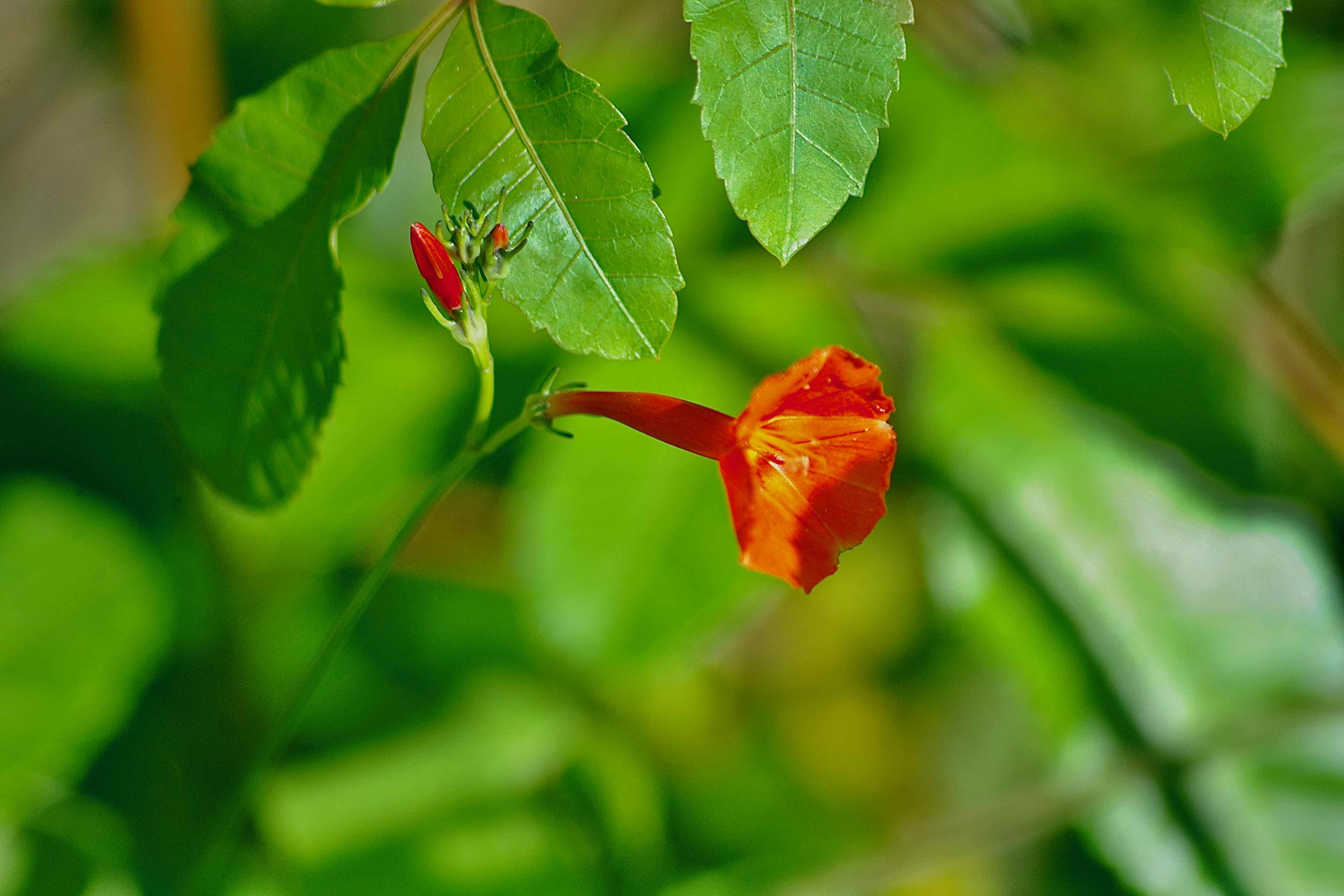
Red morning glory, photographed in southwestern Boynton Beach, Palm Beach County, in January 2014. Others at Rosemary Scrub Natural Area in Boynton Beach and Tropical Fruit Park in Redlands.
For a plant first described nearly three centuries ago (by the great naturalist Carl Linnaeus, no less) red morning glory is a bit of a botanical mystery at the most basic levels.
Like whether it's one species or two. If it's one, what's the scientific name? Is it a native or foreign invader? What if it's two? In the 21th century, there's still some room for ambiguity in the scientific world. For now, we'll go with one species, Ipomoea hederifolia, a Florida native, with a range that includes most of the state, although more concentrated in the central part of the Peninsula than here in the south.
Red morning glory is a native of the southern tier of the United States, from Georgia to New Mexico, plus a few scattered states along the Atlantic coast as far north as New Hampshire and Massachusetts. Its range includes the Caribbean, Mexico, Central America and South America to Argentina.
It is a small, annual vine that will grow to about 10 feet long, aggressively twining onto its neighbors and itself. The leaves are alternate along the stem and can be deeply and sharply lobed or heart-shaped. The flowers are trumpet-shaped, with a deep throat, typical of morning glories. It's the perfect plant for trellises and fences because it is a rapid grower. The one problem it poses is the host of seeds it produces. On the one hand, you don't have to worry about reseeding it, but it produces so many seedlings, it can grow out of control. Favorite habitats include disturbed sites along roadsides, the banks of streams, thickets, hammocks and old farm fields and pastures.
Given its bright color and shape, it's not surprising that red morning glory is a magnet for butterflies and hummingbirds.
Now for the confusing part. The U.S. Department of Agriculture's PLANTS Database divides red morning glory into two species, I. hederifolia and I. coccinea. It classifies I. hederifolia as a native, and I. coccinea as an exotic found over over most of the eastern U.S., including Florida. The two names are used seemingly interchangably throughout the web.
The authoritative Atlas of Florida Vascular Plants explains that once upon a time someone collected samples of red morning glory growing in different places, found variations in the shapes of the leaves and flowers and declared them to be from two different species. It's not convinced that there are two red morning glory species, instead recognizing only one, I hederifolia.
In either case, experts will agree that red morning glory is absolutely gorgeous. It/they likes/like full sun and can tolerate drought. Whether one species or two, red morning glory is considered a noxious weed in Arkansas and Arizona, two states that prohibit most morning glories.
Red morning glory is also known common as by scarlet morning glory, scarlet creeper, red star and ivyleaf morning glory. It is a member of Convolvulaceae, the morning glory family.
Rosemary Scrub Natural Area



